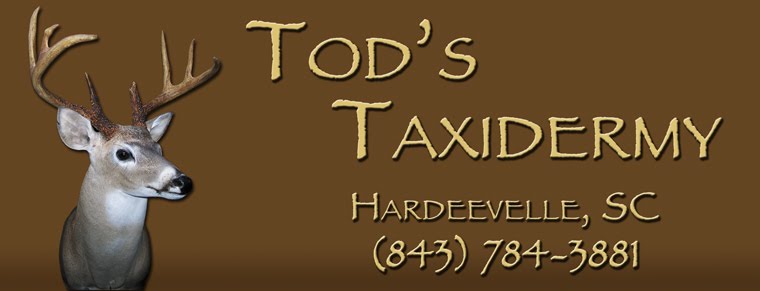
This is a deer that i did in the 2007/08 season for a customer that he shot while still in velvet. our season starts aug. 15 and most deer are still in velvet. This is a process of treating the natural velvet on the antlers with a chemical solution by both injecting internaly and spray to the exterior, the better shape the velvet is in when the job is started the better it will look when finished. the velvet must be protected or it will show in the finished product. types of protection include gently wrapping the antlers with something soft possibility's include strips of soft rags like terry cloth and held in place so they don't unravel with a little tape or string it must breath so the velvet will not mold or mildew, what we are trying to do is pad the velvet so as not to damage it in transport, the velvet is also susceptible to maggots if left out for the flies, if this happens we will be stripping the antlers and looking for some other process that i haven't done before and prefer not to do called flocking, after wrapping the antlers the same precautions are taken to in sure the hair doesn't slip like putting the head in a plastic bag and then freezing or putting it in a cooler with ice or dry ice, remember keep everything as clean as you can & cool the hide and head as soon as possible, the velvet is very soft and delicate and great care should be taken not to damage it, i can pull some tatters back into place and affix them but it can still be seen when finished, so take care of what you have for best results.


1 comment:
Hi - will you post your Blog at The Taxidermy Community ay vorts.com? Our members will love it!
It's easy just cut and paste the link and it automatically links back to your website. You can also add Classifieds, Photos, Videos, etc. It’s free and easy…
We are looking for contributors to share stuff with our members. Please help.
Email me if you need any help or would like me to do it for you.
The Taxidermy Community: http://www.vorts.com/taxidermy/
Thanks,
James Kaufman, Editor
Post a Comment